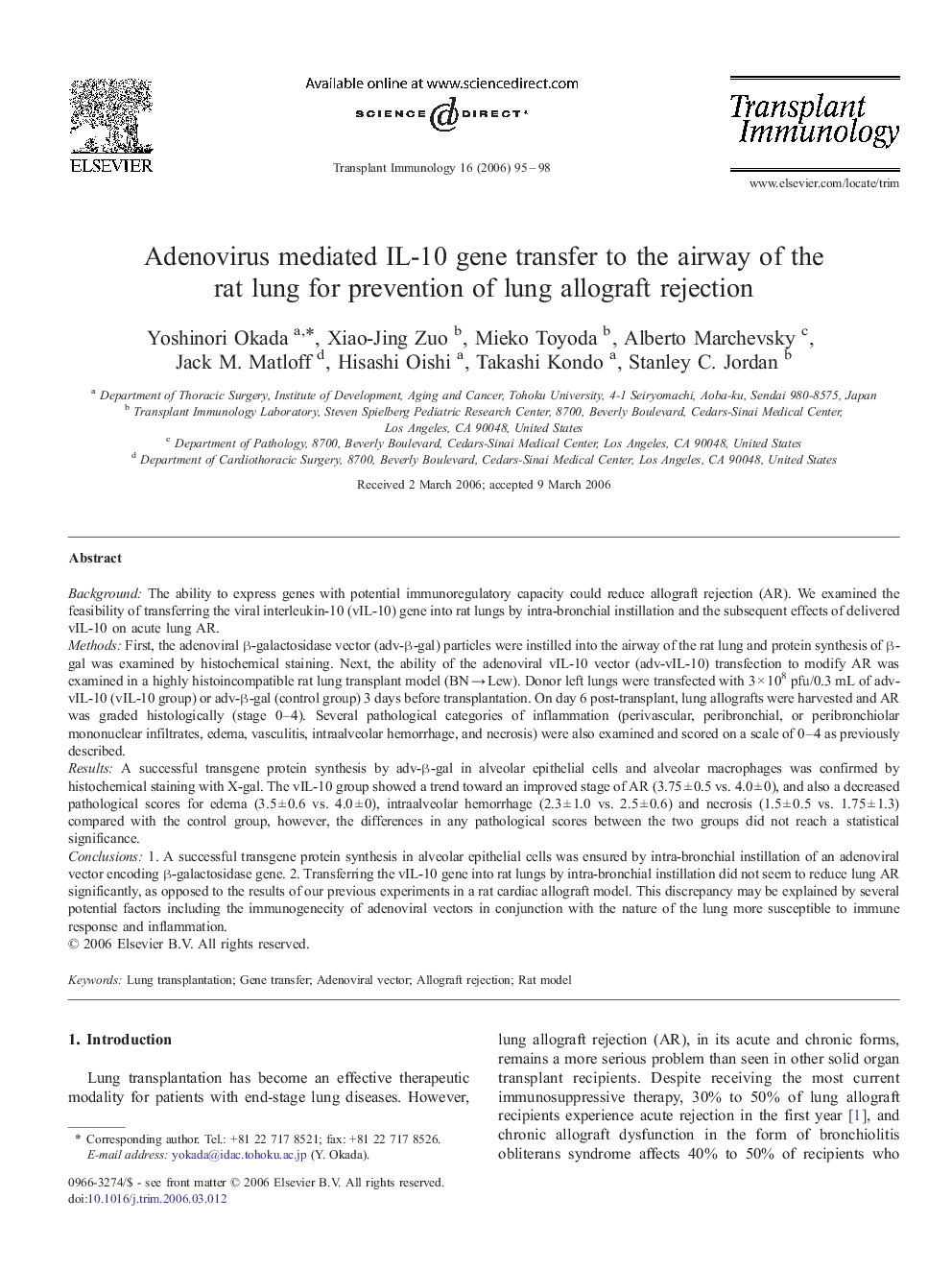| Article ID | Journal | Published Year | Pages | File Type |
|---|---|---|---|---|
| 3392558 | Transplant Immunology | 2006 | 4 Pages |
BackgroundThe ability to express genes with potential immunoregulatory capacity could reduce allograft rejection (AR). We examined the feasibility of transferring the viral interleukin-10 (vIL-10) gene into rat lungs by intra-bronchial instillation and the subsequent effects of delivered vIL-10 on acute lung AR.MethodsFirst, the adenoviral β-galactosidase vector (adv-β-gal) particles were instilled into the airway of the rat lung and protein synthesis of β-gal was examined by histochemical staining. Next, the ability of the adenoviral vIL-10 vector (adv-vIL-10) transfection to modify AR was examined in a highly histoincompatible rat lung transplant model (BN → Lew). Donor left lungs were transfected with 3 × 108 pfu/0.3 mL of adv-vIL-10 (vIL-10 group) or adv-β-gal (control group) 3 days before transplantation. On day 6 post-transplant, lung allografts were harvested and AR was graded histologically (stage 0–4). Several pathological categories of inflammation (perivascular, peribronchial, or peribronchiolar mononuclear infiltrates, edema, vasculitis, intraalveolar hemorrhage, and necrosis) were also examined and scored on a scale of 0–4 as previously described.ResultsA successful transgene protein synthesis by adv-β-gal in alveolar epithelial cells and alveolar macrophages was confirmed by histochemical staining with X-gal. The vIL-10 group showed a trend toward an improved stage of AR (3.75 ± 0.5 vs. 4.0 ± 0), and also a decreased pathological scores for edema (3.5 ± 0.6 vs. 4.0 ± 0), intraalveolar hemorrhage (2.3 ± 1.0 vs. 2.5 ± 0.6) and necrosis (1.5 ± 0.5 vs. 1.75 ± 1.3) compared with the control group, however, the differences in any pathological scores between the two groups did not reach a statistical significance.Conclusions1. A successful transgene protein synthesis in alveolar epithelial cells was ensured by intra-bronchial instillation of an adenoviral vector encoding β-galactosidase gene. 2. Transferring the vIL-10 gene into rat lungs by intra-bronchial instillation did not seem to reduce lung AR significantly, as opposed to the results of our previous experiments in a rat cardiac allograft model. This discrepancy may be explained by several potential factors including the immunogenecity of adenoviral vectors in conjunction with the nature of the lung more susceptible to immune response and inflammation.
